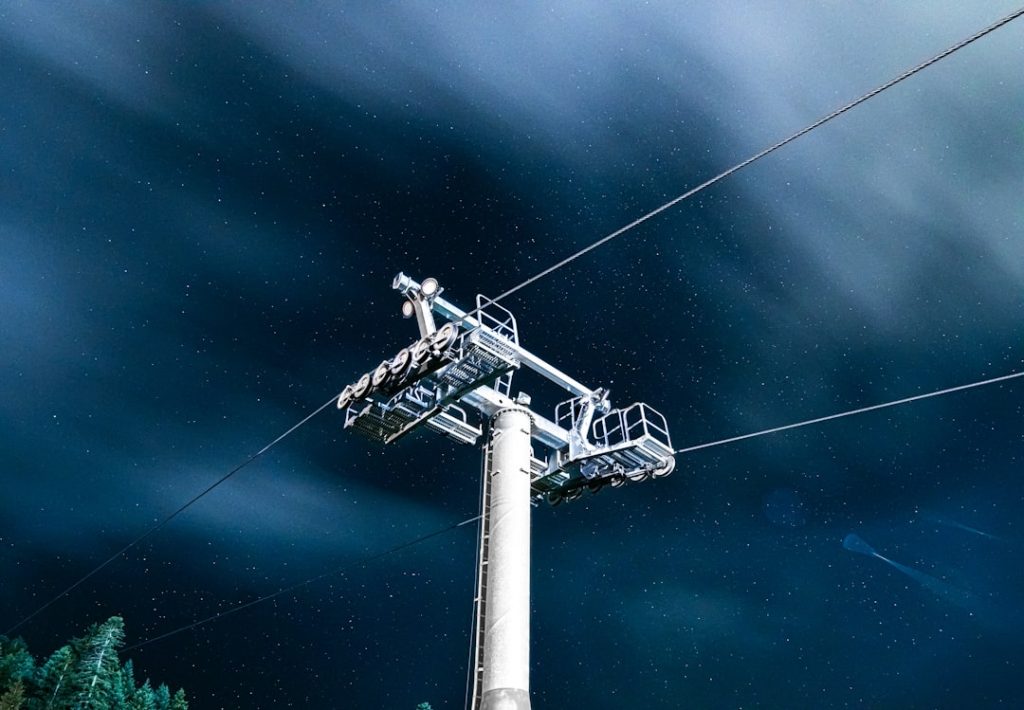The International Space Station (ISS) stands as a monumental achievement in human engineering and international cooperation, orbiting Earth at an altitude of approximately 400 kilometers. Launched in 1998, the ISS is a joint project involving five space agencies: NASA (United States), Roscosmos (Russia), ESA (European Space Agency), JAXA (Japan), and CSA (Canadian Space Agency). This remarkable structure serves not only as a laboratory for scientific research but also as a platform for international collaboration in space exploration.
The ISS has become a symbol of what humanity can achieve when nations work together toward a common goal, transcending political and cultural boundaries. The ISS is composed of multiple interconnected modules, each serving specific functions, from living quarters to laboratories. Over the years, it has been expanded with additional modules and components, making it one of the largest human-made structures in low Earth orbit.
The station orbits the Earth approximately every 90 minutes, providing a unique vantage point for observing our planet and conducting experiments in microgravity. The ISS is not merely a scientific facility; it represents a new frontier in human exploration, paving the way for future missions to the Moon, Mars, and beyond.
Key Takeaways
- The International Space Station (ISS) is a habitable artificial satellite that serves as a space environment research laboratory.
- The ISS plays a crucial role in space exploration by providing a platform for scientific research, technology development, and international collaboration.
- Daily operations on the ISS involve maintaining the station, conducting experiments, and supporting crew members’ health and well-being.
- Research and experiments conducted on the ISS cover a wide range of scientific disciplines, including biology, physics, astronomy, and materials science.
- Living and working on the ISS present unique challenges and risks, such as microgravity effects on the human body and potential exposure to radiation.
The Role of the International Space Station in Space Exploration
The ISS plays a pivotal role in advancing our understanding of space and preparing for future exploration missions. It serves as a testbed for technologies and systems that will be essential for long-duration space travel. For instance, the ISS has provided invaluable data on life support systems, radiation protection, and spacecraft docking procedures, all of which are critical for missions to Mars and other distant destinations.
By simulating the conditions of deep space, the ISS allows scientists and engineers to identify potential challenges and develop solutions before embarking on more ambitious missions. Moreover, the ISS acts as a platform for international collaboration in space exploration. It has brought together scientists, engineers, and astronauts from various countries to work on shared goals.
This collaboration fosters goodwill among nations and encourages the sharing of knowledge and resources. The experience gained from operating the ISS is invaluable for future endeavors, such as establishing a sustainable human presence on the Moon or sending crewed missions to Mars. The lessons learned from the ISS will inform the design and operation of future spacecraft and habitats, ensuring that humanity is better prepared for the challenges of deep space exploration.
Daily Operations on the International Space Station

Daily operations on the ISS are meticulously planned and executed to ensure the safety and productivity of the crew. Astronauts aboard the station follow a structured schedule that includes time for scientific research, maintenance tasks, exercise, and communication with mission control. Each day begins with a morning briefing from ground control, where crew members receive updates on their tasks and any changes to their schedule.
This coordination is crucial, as it allows for real-time adjustments based on mission priorities or unforeseen circumstances. The crew typically spends around two hours each day exercising to counteract the effects of microgravity on their bodies. This exercise routine is essential for maintaining muscle mass and bone density, which can deteriorate in a weightless environment.
Following their workout, astronauts dedicate several hours to conducting experiments and research projects that contribute to our understanding of various scientific fields. These activities are often interspersed with maintenance tasks that ensure the station’s systems remain operational. The combination of rigorous schedules and diverse responsibilities keeps astronauts engaged while maximizing the scientific output of their time in orbit.
Research and Experiments Conducted on the International Space Station
| Year | Number of Experiments Conducted | Research Area |
|---|---|---|
| 2000 | 2 | Biotechnology |
| 2005 | 10 | Materials Science |
| 2010 | 20 | Physics |
| 2015 | 30 | Life Sciences |
| 2020 | 40 | Earth and Space Science |
The ISS serves as a unique laboratory where researchers conduct experiments across a wide range of scientific disciplines, including biology, physics, materials science, and medicine. One of the most significant advantages of conducting research in microgravity is the ability to observe phenomena that cannot be replicated on Earth. For example, studies on protein crystallization have shown that proteins can form larger and more well-ordered crystals in microgravity than in terrestrial conditions.
This has implications for drug development and understanding diseases at a molecular level. In addition to fundamental research, the ISS also supports applied science that can lead to practical applications on Earth. Experiments related to fluid dynamics have provided insights into how fluids behave in microgravity, which can inform advancements in various industries, including pharmaceuticals and manufacturing.
Furthermore, research on plant growth in space has implications for future long-duration missions where food production will be essential. By studying how plants adapt to microgravity conditions, scientists can develop strategies for growing food in space environments, ensuring that astronauts have access to fresh produce during extended missions.
Living and Working on the International Space Station
Living aboard the ISS presents unique challenges and experiences that differ significantly from life on Earth. Astronauts must adapt to a microgravity environment where everyday tasks require new techniques. For instance, eating involves using specially designed packaging to prevent food from floating away, while drinking requires straws that prevent liquids from escaping into the cabin.
Personal hygiene routines are also adapted; astronauts use rinseless wipes instead of traditional showers and must carefully manage their waste using vacuum toilets. Despite these challenges, life on the ISS offers extraordinary opportunities for personal growth and camaraderie among crew members. Astronauts often describe their time aboard the station as transformative, as they experience breathtaking views of Earth and gain a profound appreciation for our planet’s fragility.
The close quarters foster strong bonds among crew members, who rely on each other for support during their mission. Regular video calls with family and friends help maintain connections with life back home, providing emotional support during their time in orbit.
Challenges and Risks of Operating the International Space Station

Operating the ISS is not without its challenges and risks. One of the primary concerns is ensuring the safety of astronauts aboard the station. The microgravity environment poses unique health risks, including muscle atrophy, bone density loss, and exposure to increased levels of cosmic radiation.
To mitigate these risks, astronauts undergo extensive training before their missions and participate in regular health monitoring while in orbit. Another significant challenge is maintaining the station’s systems and infrastructure. The ISS is subject to wear and tear due to its exposure to harsh space conditions, including temperature fluctuations and micrometeoroid impacts.
Regular maintenance tasks are essential to ensure that life support systems remain functional and that any potential issues are addressed promptly. Additionally, resupply missions are critical for delivering food, equipment, and scientific payloads to support ongoing research efforts. Any delays or failures in these missions can disrupt operations aboard the station.
International Collaboration on the International Space Station
The ISS exemplifies international collaboration in space exploration, bringing together countries with diverse expertise and resources to achieve common goals. This partnership has fostered an environment where scientists from different nations can share knowledge and collaborate on research projects that benefit humanity as a whole. The collaborative nature of the ISS program has led to significant advancements in technology and science that would not have been possible through isolated efforts.
The collaborative spirit extends beyond just scientific research; it also encompasses engineering and operational aspects of the ISS. Each participating agency contributes its unique capabilities to ensure the station’s success. For example, NASA provides launch vehicles and crew training, while Roscosmos supplies Soyuz spacecraft for crew transport.
ESA contributes modules like Columbus for scientific research, while JAXA’s Kibo module offers additional laboratory space. This pooling of resources not only enhances mission capabilities but also strengthens diplomatic ties among nations involved in space exploration.
Future of the International Space Station and its Impact on Space Exploration
As we look toward the future of the ISS, discussions about its continued operation and eventual decommissioning are ongoing. While the station has been an invaluable asset for scientific research and international collaboration since its inception, its infrastructure will eventually require replacement or significant upgrades. Plans are already underway to transition from the ISS to new platforms that will continue to support human presence in low Earth orbit.
The legacy of the ISS will undoubtedly influence future space exploration endeavors. The knowledge gained from operating this unique laboratory will inform designs for new habitats on lunar surfaces or Martian landscapes. Additionally, international partnerships established through the ISS program will serve as a foundation for collaborative efforts in future missions beyond low Earth orbit.
As humanity prepares for its next steps into deep space exploration, the lessons learned from the ISS will be instrumental in shaping our approach to living and working beyond our home planet.


